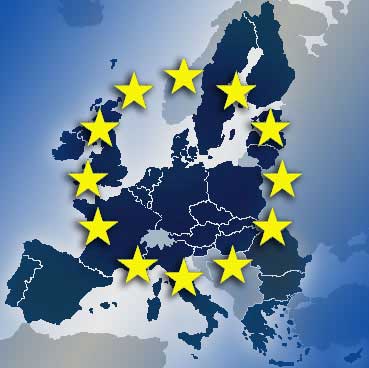EUROPEAN UNION
About the EU
 The European Union is a unique structure that does not fall into any other traditional legal category. From a historical perspective, its political system is unique and has continuously developed over a period of more than 50 years. The countries that make up the EU (its ‘member states’) delegate some of their decision-making powers to shared institutions they have created, so that decisions on specific matters of joint interest can be made democratically at European level.
The European Union is a unique structure that does not fall into any other traditional legal category. From a historical perspective, its political system is unique and has continuously developed over a period of more than 50 years. The countries that make up the EU (its ‘member states’) delegate some of their decision-making powers to shared institutions they have created, so that decisions on specific matters of joint interest can be made democratically at European level.
The term European Union was introduced with the Treaty on European Union (Maastricht Treaty), that came into force on 1 November 1993. It replaced the three legal integration structures of the Western European countries: European Economic Community EEC, European Coal and Steel Community ESCS and European Atomic Energy Community.
The process of European integration now affects the whole continent, which, in turn, is part of a rapidly and radically changing world that needs to find new stability.
Sustainable development, population trends, economic dynamism, social solidarity and an ethical response to progress in the life sciences are issues that can no longer be effectively dealt with at national level.
The 21st century offers brighter future, but it still faces Europe with new challenges and difficulties. Any European country can join the EU, provided it has a stable democracy that guarantees the rule of law, human rights and the protection of minorities. It must also have a functioning market economy and a civil service capable of applying EU laws in practice. The enlargement of the EU has strengthened democracy. It has made Europe safer and increased its potential for economic growth and trade. The EU institutions have proved their worth, but they must be adapted to cope with the enlargement of the Union and the increasing number of tasks for which it is responsible. Any definitive change in the present system must ensure plurality and respect the differences that are the most precious assets of Europe’s nations. Reforms must also concentrate on the decision-making process.
Since 1 July 2013, the European Union has 28 members and over half a billion people.
Cooperation among member states is based on free movement of goods, services, people and capital, with no customs barriers or other restrictions. This was made possible with the creation of the Single Market. Member states cooperate in other areas, as well - environment, agriculture, fight against organized crime.
The decision to set up an area without internal frontiers known as the Schengen Area was one of the most important moves to make life easier for travellers in the European Union. It abolished all checks on people, regardless of nationality, at their shared borders, harmonised controls at their borders with non-EU countries and introduced a common policy on visas. The Schengen information system (SIS) is a complex database which enables police forces and judicial authorities to exchange information on people for whom an arrest warrant or extradition request has been issued, and on stolen property such as vehicles or works of art.
The main challenge for the EU is to take effective action to ensure the safety and security of its members. In order to deal with this challenge, the EU has been developed a genuine common European security and defence policy, enabling it to act globally as a power of stability, cooperation and understanding.
About half of the EU member states are part of the European Monetary Union and have introduced the common currency euro. The other countries are either not part of the Monetary Union or have still not fulfilled the convergence criteria.
A member state must not favour its products or services - goods or services have to be purchased and sold under equal circumstance throughout the EU. Therefore, the EU has single customs tariff and trade policy.
The aims of the Common Agricultural Policy are competitive agriculture and production of healthy food. Large part of the EU Budget is spent on the agricultural policy.
Agriculture, forestry and rural development are crucial for ensuring sustainable exploitation of land and natural resource management in the European rural areas. The strengthening of EU rural development policy has become an overall EU priority.
EU has common regulations in the areas of environment protection, citizens health care and sustainable use of natural resources.
Through cooperation among the customs, police and public prosecution authorities in the member states, joint action is ensured in the fight against international organized crime. Common rules apply in the fight against terrorism, trade in drugs and child pornography.
The main objective of the common immigration policy is to improve management in the area of migration by adopting harmonised rules and common approach, while taking into consideration the economy and demographics of the EU.